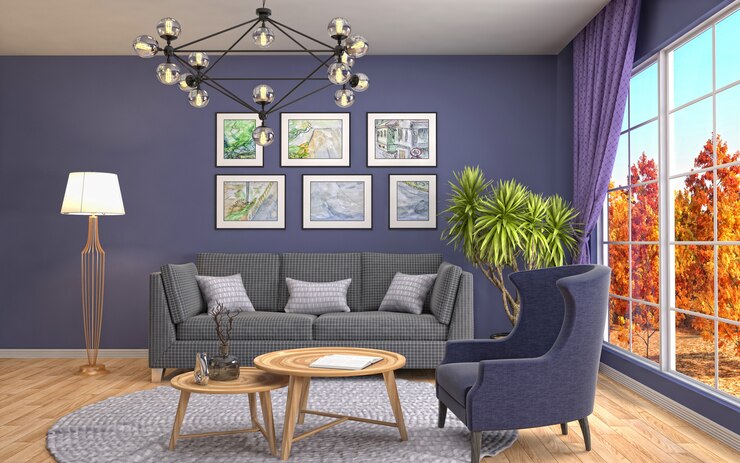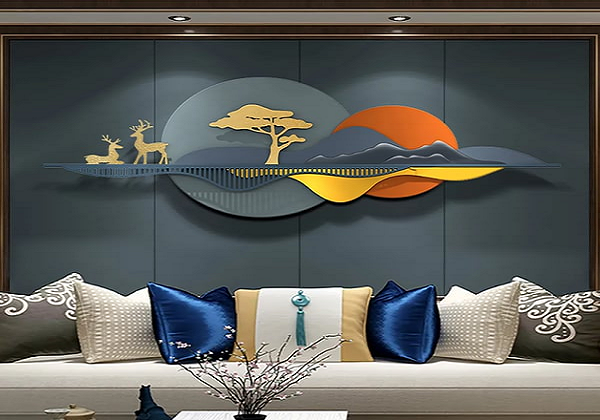
Step By Step Guide For Home Decoration
Table of Content
Home Decoration: Express Your Style
Your house is a representation of who you are, not just a location.Decorating your home is an exciting opportunity to showcase your personality, style, and creativity. Whether you're starting from scratch or refreshing your current space, this guide will walk you through every step to create a home that’s both functional and beautiful.
1. Discover Your Style
-
Exploring Interior Design Styles: Start by understanding different interior design styles. Familiarize yourself with mainstream styles like “minimalism, farmhouse, shabby chic, bohemian, or Victorian”. To create a distinctive setting that works for you, don't be scared to combine diverse styles. A 2023 Houzz poll found that 58% of homeowners made house renovations to showcase their individual flair.
-
Finding Inspiration: Look around your environment for inspiration. Your wall design choices can be influenced by your favorite pieces of art, your outfit, or items that strike your eye. Additionally, travel can impact your design. Moroccan textiles or seaside feelings are two examples of how you might use your travels to inform your wall decor ideas.
-
Mood Boarding: Using a mood board, you may see your thoughts more clearly. vibe boards, whether digital or analog, let you try out different color, texture, and material combinations that represent the vibe you want for your house, such as comfortable, invigorating, or peaceful.
2. Plan Your Space
-
Space Planning Considerations: Think about how each room will function. According to the National Association of Home Builders (NAHB), 78% of homeowners prioritize functionality in their design choices.
-
Taking Measurements: Before buying furniture or outdoor furniture, measure your space to ensure your chosen items fit. Also, account for clearance around doors and furniture to avoid creating obstructions. Improperly sized furniture is one of the top five design mistakes homeowners regret, according to a 2023 Zillow report.
-
Digital technology Tools: Before deciding on furniture or décor, try out several room layouts using internet tools or applications.
3. Choose a Color Palette
Apply the 60-30-10 Rule
-
Distribute colors wisely:
-
60% dominant color (walls & large furniture)
-
30% secondary color (upholstery, rugs)
-
10% accent color (decor items, cushions)
Consider Color Psychology
-
Warm colors (reds, oranges) add energy and warmth.
-
Cool colors (blues, greens) create a calm, serene atmosphere.
-
Neutral tones (grays, whites) offer versatility.
Test Before Committing
Paint small wall sections first to see how the color looks in different lighting conditions. According to a study by Color Marketing Group, over 85% of buyers say color influences their decor decisions.
4. Invest in Key Pieces
-
Choosing Key Pieces: Invest in durable and timeless furniture pieces, such as a sectional sofa or a statement dining table. Consider the quality and functionality, as well as how they enhance your home accessories. A Statista report shows that the global furniture market is expected to reach $650 billion by 2028, with a rise in demand for multi-functional furniture.
-
Multi-functional Furniture: For smaller spaces, choose space-saving solutions like sofa beds, coffee tables with storage, or ottomans that double as storage. Research by the Home Furnishings Association states that 35% of consumers look for multi-functional furniture when decorating.
5. Add Personality with Accessories

-
Choosing Accessories: Start with a focal point, such as an art piece or wall clock, and build your accessories around it. Use the rule of threes for styling accessories—group items in odd numbers to create visual interest. A study by Wayfair found that 45% of people feel that accessories help personalize a home.
-
Finding Unique Pieces: Consider vintage stores, local artists, or DIY projects for unique decor items. These items can add character to your space and make your home decor truly personal. Handmade and artisanal decor sales increased by 28% in 2023, according to Etsy.
6. Incorporate Natural Elements
-
Nature's Influence: Incorporate biophilic design by bringing nature into your space. Natural elements such as plants, stones, and woven baskets can elevate your home decor items and help improve the atmosphere of your home. A study by the University of Exeter found that adding plants to a workspace can increase productivity by 15%.
-
Bringing the Outdoors In: Maximize natural light and use mirrors to reflect light, making your space feel open and airy. Add water features, like mini fountains, to bring a sense of tranquility to your home. Research by the National Renewable Energy Laboratory shows that natural lighting can help reduce energy costs by up to 75%.
7. Lighting Matters

-
The Three Layers of Lighting:
-
Ambient lighting: General room lighting (ceiling fixtures).
-
Task lighting: Focused lights (reading lamps, under-cabinet lights).
-
Accent lighting: Highlights decor (spotlights, wall sconces).
-
-
Smart Lighting: Consider smart lighting solutions that can be controlled via an app or voice assistant, adding an extra layer of convenience to your space. Smart home lighting sales are expected to surpass $30 billion globally by 2027, according to MarketsandMarkets.
8. Create Cozy Corners
-
Finding Your Cozy Spot: Transform underutilized areas into cozy corners by repurposing furniture. A window seat, reading nook, or even a corner with a comfy chair and a lamp can turn any space into a retreat.
-
Soft Touches: Add pillows, throws, and soft blankets to make your cozy corner extra inviting. A survey by Apartment Therapy found that 73% of homeowners believe cozy elements are essential for a comfortable living space.
Conclusion
Decorating your home is an exciting journey that allows you to express your personality and style. Whether you’re adding wall decor, incorporating home accessories, or choosing furniture and outdoor furniture, every step will help you create a space that feels like home. By following these steps and incorporating your personal touches, you'll create a beautiful and functional living space that you can truly call your own.
Remember, the key to great home decor is blending style, function, and comfort. Happy decorating!












